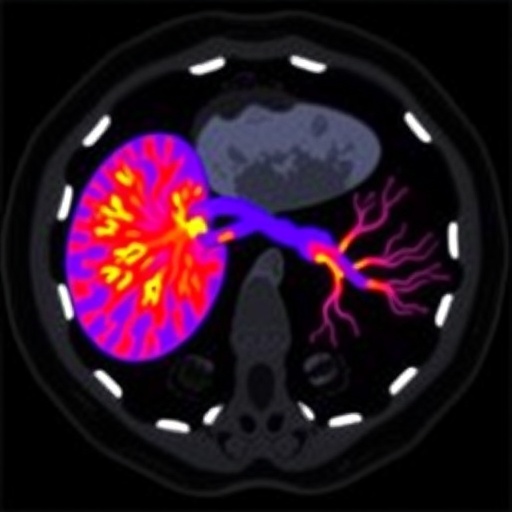Philadelphia, PA, January 5, 2017 – Treatment with an inhibitor of 12/15-lipoxygenase, an enzyme elevated in patients with Alzheimer's disease (AD), reverses cognitive decline and neuropathology in an AD mouse model, reports a new study in Biological Psychiatry. The effects were observed after the AD-like phenotype was already established in the mice, which is promising for its potential therapeutic use, as neuropathology tends to develop many years before the appearance of AD symptoms in patients.
The study, by senior author Domenico Pratic? and colleagues at Temple University in Philadelphia, Pennsylvania, offers some hope for a new treatment for patients with AD, who currently have no effective therapy options. Past research has focused on prevention of the disease by reducing the levels of proteins that cause brain plaques and tangles and kill nerve cells.
"In this exciting new study, the authors provide support for a new experimental treatment approach that works by helping nerve cells digest toxic proteins that might otherwise cause cell death," said John Krystal, Editor of Biological Psychiatry.
First author Antonio Di Meco and colleagues used a triple transgenic (3xTg) mouse model that displays an AD-like phenotype, including cognitive decline, and Aβ and tau neuropathology characteristic of the disease in humans. They had already shown that early administration of the 12/15-lipoxygenase inhibitor PD146176 could prevent the onset of these features in mice. To achieve a more real-world scenario in this study, they waited until the transgenic mice were a year old, when both cognitive impairments and neuropathology were established, before administering the drug.
"We show for the first time that selective pharmacologic inhibition of the 12/15-lipoxygenase enzyme rescues the entire AD-like phenotype," Praticò said.
Untreated 3xTg mice displayed impaired learning and memory as expected, but 3xTg mice that were administered PD146176 for 3 months were indistinguishable from normal mice in a memory test. In the same mice, the researchers found that PD146176 treatment significantly reduced the levels of Aβ and insoluble tau proteins.
Inhibition of 12/15-lipoxygenase activated autophagy, the body's natural kill system for cells. The activation was associated with decreased levels of tau, suggesting that the inhibitor works by re-activating the neuronal autophagy machinery to clear cellular buildup of tau.
The results indicate that pharmacological inhibition of 12/15-lipoxygenase reverses learning and memory impairments and reduces Aβ and tau neuropathology, even after their onset in aged mice.
"Our findings have important translational value since they establish this protein enzyme as a novel and viable therapeutic target with real disease-modifying potential for AD," Praticò said.
###
Notes for editors
The article is "12/15-Lipoxygenase Inhibition Reverses Cognitive Impairment, Brain Amyloidosis, and Tau Pathology by Stimulating Autophagy in Aged Triple Transgenic Mice," by Antonio Di Meco, Jian-Guo Li, Benjamin E. Blass, Magid Abou-Gharbia, Elisabetta Lauretti, and Domenico Praticò (doi: 10.1016/j.biopsych.2016.05.023). It appears in Biological Psychiatry, volume 81, issue 2 (2017), published by Elsevier.
Copies of this paper are available to credentialed journalists upon request; please contact Rhiannon Bugno at +1 214 648 0880 or [email protected]. Journalists wishing to interview the authors may contact Domenico Praticò, M.D., at [email protected].
The authors' affiliations, and disclosures of financial and conflicts of interests are available in the article.
John H. Krystal, M.D., is Chairman of the Department of Psychiatry at the Yale University School of Medicine, Chief of Psychiatry at Yale-New Haven Hospital, and a research psychiatrist at the VA Connecticut Healthcare System. His disclosures of financial and conflicts of interests are available here.
About Biological Psychiatry
Biological Psychiatry is the official journal of the Society of Biological Psychiatry, whose purpose is to promote excellence in scientific research and education in fields that investigate the nature, causes, mechanisms and treatments of disorders of thought, emotion, or behavior. In accord with this mission, this peer-reviewed, rapid-publication, international journal publishes both basic and clinical contributions from all disciplines and research areas relevant to the pathophysiology and treatment of major psychiatric disorders.
The journal publishes novel results of original research which represent an important new lead or significant impact on the field, particularly those addressing genetic and environmental risk factors, neural circuitry and neurochemistry, and important new therapeutic approaches. Reviews and commentaries that focus on topics of current research and interest are also encouraged.
Biological Psychiatry is one of the most selective and highly cited journals in the field of psychiatric neuroscience. It is ranked 5th out of 140 Psychiatry titles and 11th out of 256 Neurosciences titles in the Journal Citations Reports® published by Thomson Reuters. The 2015 Impact Factor score for Biological Psychiatry is 11.212.
About Elsevier
Elsevier is a world-leading provider of information solutions that enhance the performance of science, health, and technology professionals, empowering them to make better decisions, deliver better care, and sometimes make groundbreaking discoveries that advance the boundaries of knowledge and human progress. Elsevier provides web-based, digital solutions — among them ScienceDirect, Scopus, Research Intelligence and ClinicalKey — and publishes over 2,500 journals, including The Lancet and Cell, and more than 35,000 book titles, including a number of iconic reference works. Elsevier is part of RELX Group, a world-leading provider of information and analytics for professional and business customers across industries. http://www.elsevier.com
Media contact
Rhiannon Bugno
Editorial Office, Biological Psychiatry
+1 214 648 0880
[email protected]
Media Contact
Rhiannon Bugno
[email protected]
214-648-0880
@elseviernews
http://www.elsevier.com
############
Story Source: Materials provided by Scienmag




